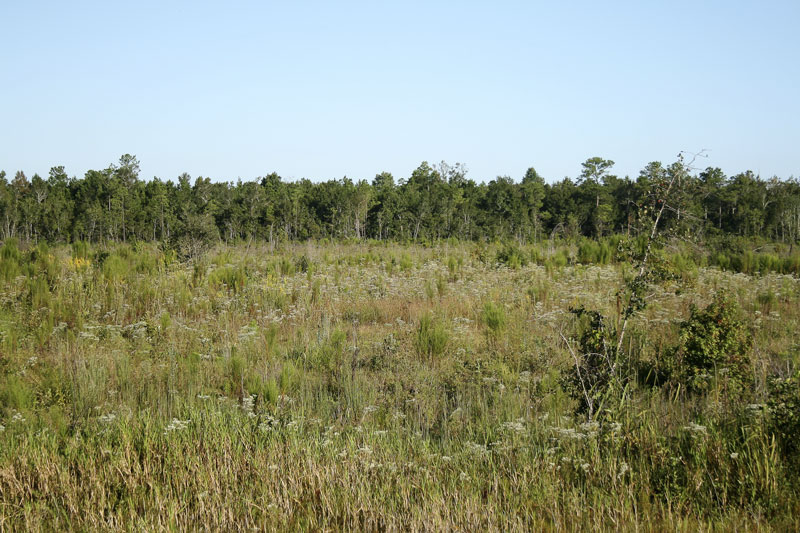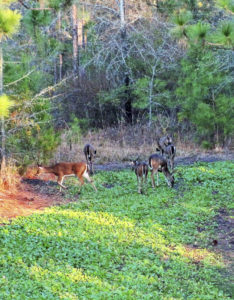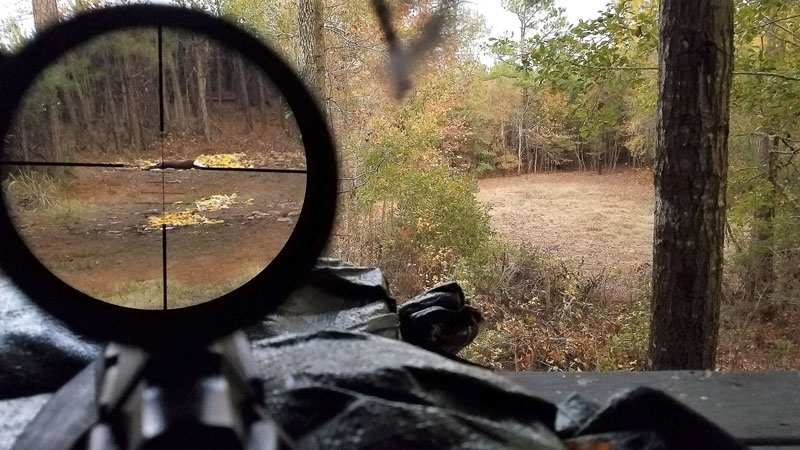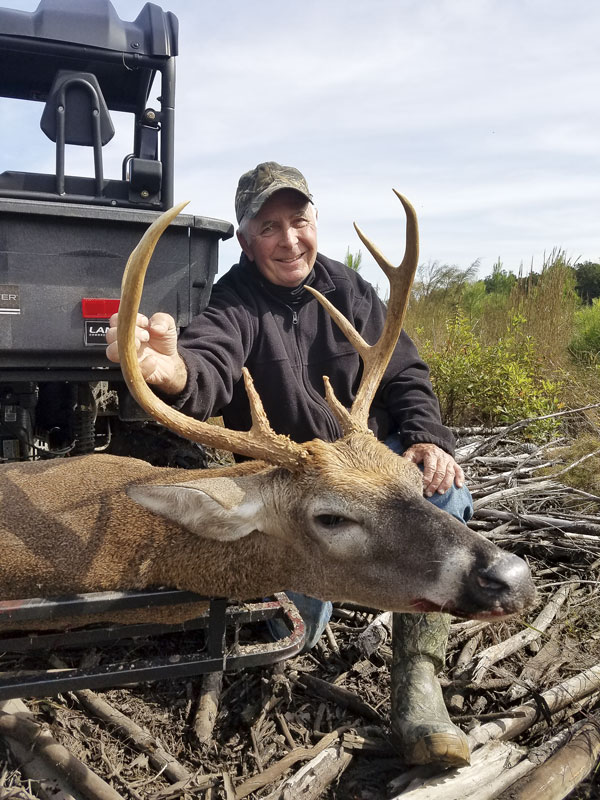 The rut may be in the rear-view mirror for most hunters in the Carolinas, but there’s still plenty of time left to fill a tag or two in the season’s final month, if you understand what’s driving deer behavior.
The rut may be in the rear-view mirror for most hunters in the Carolinas, but there’s still plenty of time left to fill a tag or two in the season’s final month, if you understand what’s driving deer behavior.
As the deer rut inevitably wanes in December, so does the willingness of many hunters to sit in a deer stand on a cold day. Rutting activity in the Carolinas is the exception, not the norm. Deer return to their survivalist lifestyle, a stark contrast to the propagation-of-the-species mode hunters enjoyed during the rut.
Knowledgeable hunters will continue to be successful, but they make significant changes in how they hunt.
Trey Phillips from Summerton, S.C., hunts the late season, aka the post-rut, with a well-defined game plan from lessons learned and experience gleaned from his father through a lifetime of hunting.
“Late season is still productive in terms of the opportunity to harvest deer, but a shift in strategy is essential,” Phillips said. “During the rut, bucks and does move a lot, and bucks travel well outside their normal range to find receptive does. But by December, they’re returning to a home range, and movement diminishes dramatically.”
Phillips, and his wife Whitney, own the Clarendon Club, a 2,000-acre facility near Summerton. Phillips serves as manager and a hunting guide on the property.
“By late season, much of the browse is gone, and acorns are usually scarce,” he said. “It’s crucial to focus on food sources and late-season habitat, not reproductive behavior.”
 Phillips (803-478-2010) copes with the deer-pattern change, just as he did when early season behavior transitioned into the rut by re-distributing trail cameras around his property to find where deer are congregated.
Phillips (803-478-2010) copes with the deer-pattern change, just as he did when early season behavior transitioned into the rut by re-distributing trail cameras around his property to find where deer are congregated.
He said locations deer prefer can vary from year to year, so don’t expect deer to simply be where they were the previous December.
“Habitat is always changing, and so will deer patterns,” Phillips said. “Changes to habitat — such as timber harvest — can be significant, or it may occur with subtle changes such as natural vegetative growth.”
Deer may not go far, he said, but they typically move to habitat providing more secure cover, with access to food and water. Using multiple trail cameras enables him to find and target these high-use deer areas.
Using trial cameras to track changing deer movements is a tactic also employed by Mike Johnson, manager of the Clinton House, 2,000-acre hunting facility near Clinton, S.C.

“Two factors are crucial for late-season deer-hunting success, and that’s tracking where deer go during post-rut and having prime food sources available in those places,” Johnson said. “Our hunters see and harvest some really big bucks during the late season, but we put considerable planning and effort to have the best opportunity, and we move our trail cameras around to identify hotspots. Deer are going to be more cover-oriented and won’t move as much as during the rut. They will rely on food sources we provide during December.”
Johnson (864-316-1371) said he pours the food to the deer, as that’s a major key to success late season. He plants food plots of all sizes, from big fields to small strips along roadsides.
“Any place I can get something green to grow is a potential deer attractor,” he said. “Plus, we also increase the amount of food placed at bait stations, specifically corn.”
Phillips will focus on three kinds of areas for late-season hunting, including food plots, cutovers and overgrown fields.
“Depending on where a hunter is located, the crops planted can vary, but the key is to get some fresh greenery for deer to eat right now,” he said. “I keep mine simple and use wheats and oats. I’ve tried other crops, but the soil where I am grows these crops exceptionally well, and they’re deer magnets.”
Clear-cut areas in early stages of regrowth offer security because of the dense vegetation associated with this habitat, and typically, some forage is still available in the dense growth.
“I cut openings in the clear-cuts and set up bait stations to attract deer to specific areas, enabling me to place stands with ingress and egress that won’t alert deer,” he said. “I stay away from the baited areas except when feeding, and even then, I keep my boots off the ground as much as possible. The slight edge we had during the rut in terms of deer being slightly less wary is gone. Late-season hunters need to utilize every edge.”
Overgrown fields, including power lines, are mowed every three years to keep pine and gun trees out, but Johnson wants ample cover to provide security for deer.
“In these areas, I’ll cut lanes for shooting to place bait stations, but often I have the opportunity to enhance the spot with a small food-plot strip too,” he said. “These areas can be exceptionally good late-season targets.”
Mike Johnson agrees that different areas can be deer hotspots and that clear-cuts are year-round deer producers. He uses food to help influence deer movements in the gnarly cover.
“During the late season, we can actually better predict where deer will move by providing ample food sources to offset the lack of natural food options,” he said. “We’ve found late-season deer movements are much more predictable, with a diversity of food sources, including food plots and bait stations.”
Johnson said hunters need to be more diligent and work harder than they do during the rut.
“It’s simply that deer are in a different mode most of the time; they’re back to survival mode, but big bucks are still going to check does,” he said.
Anywhere multiple does are feeding is potentially a good place to attract a buck, he said. It’s not unusual to see multiple deer at a food source in late season, because deer are often congregated in specific areas.
“But lots of deer in a specific area also means much of the property may have less deer movement,” he said. “You’ve got to find these deer-concentration areas and hunt them.”
Phillips said stand setup is a key late in the season; he takes advantage of prevailing wind patterns and sun angles. He ensures the stand isn’t facing a rising or setting sun, because a lot of the late-season activity is during low-light conditions.
Phillips said having a quality scope is a huge advantage, because often, that big blob of a buck will step into his crosshairs at first or last light of the day.
“Be in the stand well before shooting light or stay until you can no longer see in the evening if you’re targeting a big buck,” he said.
Johnson said patience and diligence are also keys to beating the late-season deer doldrums.
“A lot of our successful late-season hunters spend long hours in the stand,” he said. “One good example is, a hunter spent the entire day in a stand last December and took a trophy buck for his efforts. Deer don’t move as much as during the rut, but they will move enough, and if you’re in the right spot when he moves, you can take a big buck.”

Why deer behavior changes late in season
Charles Ruth, the biologist who supervises the big-game program for the S.C. Department of Natural Resources, said late-season deer hunting can be quite difficult.
“Hormonal changes occur as they did prior to the rut, but now (they) relate to a decrease in deer movement as the rut ends, and with few does in estrus,” he said. “Most does are pregnant, thus not an option to breed. Simply put, the reason for all the high activity in the previous few weeks has ended, so deer behavior changes.”
Ruth said a couple of events can create isolated periods of good hunting.
“One is, an unbred doe may come into estrus late, and if you happen to be in the woods in that specific area when that occurs, deer movement can increase significantly for a very brief period in that area,” he said. “These are more random, isolated situations, but it does happen.”
He said a couple of unusual weather events can also trigger more deer movement than normal.
“One is getting a bitter cold front that dramatically drops the temperature. The ensuing clear skies and bitter cold will cause deer to get on their feet and move,” he said. “Another would be a widespread event of miserable weather. A good example would be a prolonged period of cold weather, mid-40s perhaps, with drizzling rain. This creates the need for deer to feed more frequently.”
Natural deer movements decrease during late season, but taking advantage of unique situations and weather events can put a hunter in a position to be successful.





Be the first to comment